This is a guest post by Vyom Vyas
April 2022- It was past midnight. The air outside was hot and muggy. I was in my study room when suddenly I heard a pop – an email alert. The sender of the email was The Cornell Lab of Ornithology! I started reading the email, heart pounding and before even finishing the entire email I ran to tell my family that I was selected for Young Birders Event– a four-day immersive learning event for teenagers with a passion for birds and an interest in careers related to birds.

28 July 2022, Day 1:
Fast-forwarding to 28 July I arrived at the Cornell Lab which is nestled back in the woods overlooking a lake. This place is a popular birding hotspot- Sapsucker Woods. I cherished the first glimpses of the place that was so close to my heart. As soon as I entered the campus, birds started swarming and singing around me- as if welcoming me. It was an absolute delight to be there. After a few photos of the Lab building, I headed towards the visitor center, where I was greeted by Vanessa Powell and Jessie Barry. I was given a goodie bag that contained a T-shirt, bookmarks, a pen drive, a water bottle, a book, my name tag, and stickers. I then joined the rest of the young birders who were selected for the Young Birders Event. Ian Owens gave a brief introductory talk and the rest of us introduced ourselves. We met Christopher Wood, Jessie Barry, Ian Davies, and Jay McGowan and all of us started sharing our birding stories. The ambassador of Carl Zeiss Optics took everyone by surprise by announcing to give TERRA ED 8×42 binoculars to every young birder! A generous gesture greatly appreciated by all. We had a terrific session by Adriaan Dokter from BirdCast and he explained the marvels of bird migration in spring and fall and how BirdCast uses different techniques to track densities of migrating birds over North America. After the session, we left for our dormitory rooms since we had to start quite early the next day. I was sharing my dorm with Henry Edelman, a fantastic young birder from Philippines. We shared a lot of fun stories before going to bed.
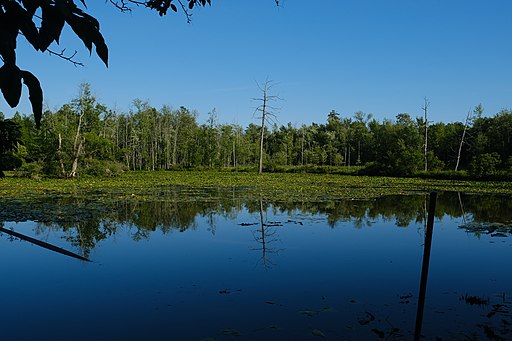
Sapsucker Woods. Photo Credit: Deodandem, CC BY-SA 4.0 via Wikimedia Commons
29 July 2022, Day 2:
Our group split in two, the first group went birding at Roy H. Park and the other went for a sound recording session at Shindagin Hollow SF, with Andrew Spencer and Jay McGowan. I chose to go for the recording session since I really wanted a dedicated time to record North American birds at the break of dawn. I was in a subgroup with Andrew Spencer and Jae Walsh (a great young birder from the United States). It was quite a productive session for me as I got to record some interesting vocals of Canada Warbler, and a Yellow-throated Vireo with a parabola and a Song Sparrow with a shotgun microphone. I had my first ever sighting of a hummingbird- a bird that has a captivating effect on even a non-birder. After a great session for two hours, the teams swapped places. On the way to Roy H. Park, I spotted two American Kestrels by the side of the road (another unexpected lifer!). We came across some really cool birds like Acadian Flycatcher, Ovenbird, Blue-headed Vireos, a recently fledged Sharp-shinned Hawk, and many more. But the highlight of the session was not a bird! It was Chris who skillfully mimicked a Barred Owl (I can still hear it to this very day!), to which not one, but two owls promptly responded. After the excellent birding in the morning, all the birders (both teams) headed to the Lab for some refreshments. After lunch, all birders headed to the trails of Sapsucker Woods with Ian, Chris, and Jessie for some more birding. More interesting sessions followed that evening– a Q&A with Ian Owens, then a presentation on the importance of Data Science for Avian Conservation by Matt Strimas-Mackey, a presentation by Gemma Clucas, and another Q&A session by Irby Lovette and two students regarding Cornell University. My mind was completely blown by all of these talks, and it’s now wide open to even more unique ideas. I got a much better idea of what I want to do with my life in the future. After the series of presentations, we all had a pizza party. I tried Ginger ale for the first time in my life, quite a refreshing drink it was. Then came the part many were eagerly waiting for – going to the museum of invertebrates. In the specimen preparation lab, we were greeted by some interesting-looking stuff. There were a few round skins of birds being prepared on the table, an entire skeleton of a heron being eaten by beetles, a Black Vulture’s head, and much more crazy stuff. After briefly understanding the specimen preparation process, we headed toward the museum. It was astounding to know the museum had around 60,000 specimens and some of which were extinct or even more than 100 years old. We had around two hours of free access to the museum to see any specimen we wished to see. Before starting, all the birders were shown the specimens which were, sadly, extinct. All were surprised to see Ivory-billed Woodpeckers, Heath hens, Dusky Seaside Sparrows, Passenger Pigeons, Carolina Parakeet, Bachman’s Warblers, and Eskimo Curlews. There were, fortunately, some species too which were quite special ones, and were not extinct, like Darwin’s Finches and California Condors. Then all were free to see and photograph whichever specimen they liked. After the amazing time spent in the museum, all were quite upset to leave that place and head back to the dorm. Back at the dorm, Ian and Tayler were waiting for all of us. A few birders enjoyed in the lounge room while others headed to their dorms for rest. I and Henry were in the lounge room, I was editing my bird calls while Henry was creating a WhatsApp group.
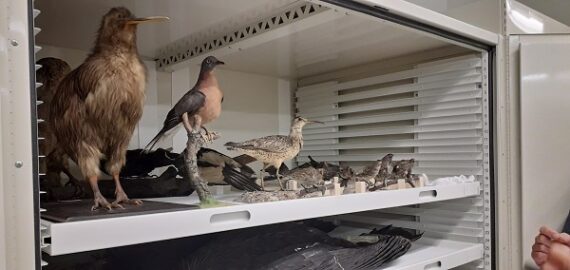
Taxidermy mounts of some extinct species
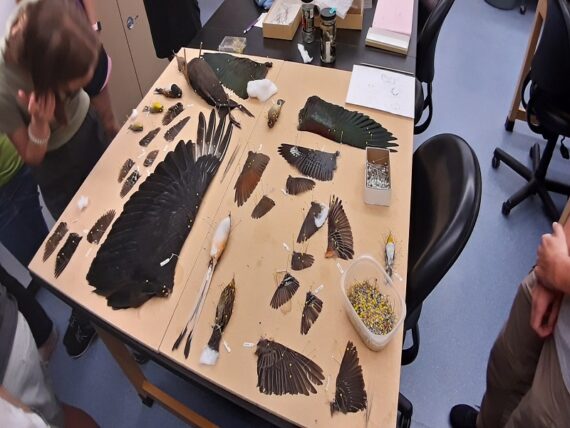
Bird Specimen Preparation Process at the museum of Cornell Lab of Ornithology
30 July 2022, Day 3:
This was a hectic and “birdy” day. We started our day very early for birding at Montezuma NWR. We saw a few Purple Martins, thousands of Tree Swallows, a Ruby-throated Hummingbird, and a Cedar Waxwing nest. Further ahead we saw some Wilson’s Snipes hanging around in the fields on the right side of the road, while on the left, a Marsh Wren put on a great show by singing on top of some cattails. There were a few distant raptors like Northern Harriers and Bald Eagles too. We stopped at a water body and from a vantage point scanned with scopes and binoculars. I did not get a chance to use my camera, but the joy of seeing birds through binoculars was quite heart filling. We topped this birding session with 56 species and around 4600 individual birds. We headed to some spots to catch glimpses of special birds, namely, Cerulean Warbler, Black Terns, Trumpeter Swan, and many more. It turned out to be a lucky day for the group because we were able to see nearly every unusual bird we had in mind. Morning birding ended with scrumptious meal at Wolffy’s Grill and Marina. After having sandwiches and burgers, all were energized and headed towards the next targeted bird, the Red-headed Woodpecker. It was surprisingly easy since we had to walk for a few feet and a single sub-adult bird gave decent views to all. On our way back we shared photos we had clicked that day (especially of Cerulean Warbler). Back at the Lab, Andy Johnson gave a presentation on the topic of Conservation Media. I learned the importance of media and how it plays a key role in shaping the perspectives of the human mind. I was even more amazed to learn the fact that half of the America’s Whimbrel population preferred to migrate through a small island on the eastern coast of the United States.
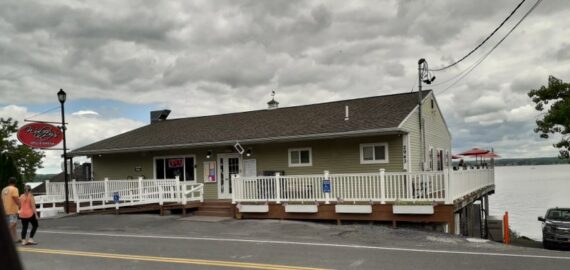
Wolffy’s Grill and Marina
31 July 2022, Day4:
In the morning, after a quick breakfast of yogurt, bananas, and juice, we headed towards Lindsay-Parsons Biodiversity Preserve. At the entrance of the preserve, we were greeted by quite a lot of unique species- Worm-eating Warbler, Baltimore Oriole, Yellow-throated Vireo, and a perched Red-tailed Hawk. There were a variety of microhabitats in the preserve, ranging from small grasslands to forests. There were two ponds too which supported a few waterfowl like Wood Ducks and Hooded Mergansers. Throughout our walk, there were a wide variety of birds. I was surprised to see many warbler species being present in the small area that we covered. The special warblers included Prairie Warbler, Blue-winged Warbler, Black-and-white Warbler, Nashville Warbler, Hooded Warbler, and Blackburnian Warbler. Along with these, there were grosbeaks, buntings, vireos, and tanagers too. Unfortunately, unlike the previous day, this session was rather short and before we could realise it, we had to head back to the dorms to pack our stuff up. All the bags were packed in the two vans and the group was headed towards the Lab for the final lunch and goodbyes. After the group photo in front of the Lab, everyone bid goodbye to each other. The atmosphere was quite stirring as we sat in our vehicles and headed out of the parking. Unfortunately, I couldn’t convey my farewells and best wishes to all but I would always appreciate the moments I spent with Colin, Henry, Sean, and Maliha. Although I could not spend more time with all the memories of the weekend will definitely stay close to my heart forever.
I could not express my thoughts and experiences of the camp fully since it would require an unimaginable amount of space to hold the astonishing experiences I had throughout the weekend. To make this event successful, I wholeheartedly thank Jessie Barry, Chris Wood, Vanessa Powell, Ian Davies, Tayler Brooks, Andrew Spencer, Ian Owens, Jay McGowan, Irby Lovette, Adriaan Dokter, Gemma Clucas, Matt Strimas-Mackey, Andy Johnson, and everyone else for helping and guiding us throughout the weekend and enriching our knowledge with the informative talks. I was fortunate to meet the incredibly talented young birders with whom I felt incredible while interacting and exchanging knowledge and experiences with them. The young birders are Henry, Jae, Colin U., Sarah, Sean, Catie, Maliha, Coco, Rachel, Reed, Reya, Colin M., and Brian. Special thanks to Esha Munshi for the consistent help and motivation throughout Cornell’s journey.
In the end, weekend spent at Cornell Lab was life-changing. I met a lot of new people, heard some amazing stories, learned a lot of new things, and got a clarity on what I want to do in future. The Lab and people associated with it occupy a very special place in my heart and I hope to re-visit someday. And of course, I am positive that I would meet at least some of my young birder friends and together we will see more new and unique birds at different places.
Here is my eBird Trip Report.

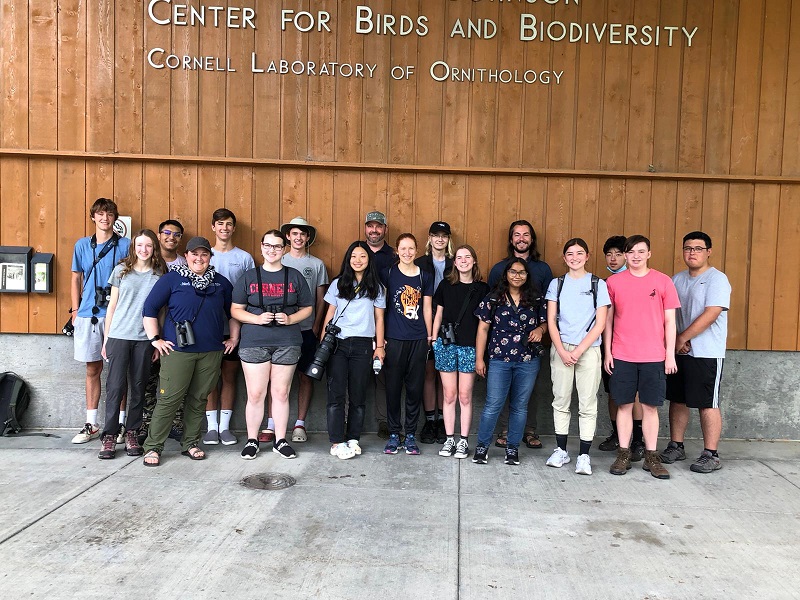
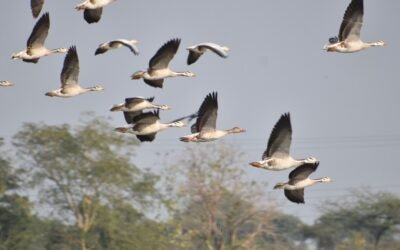
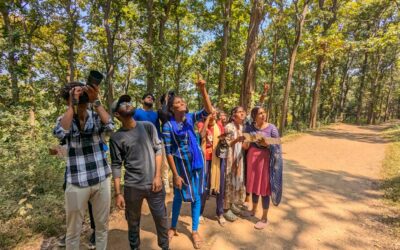
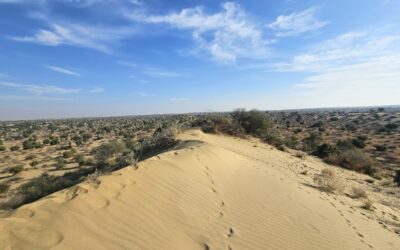
Superb article, Vyom… it’s a very informative and inspiring for the all birders, who want to pursue their career in the scientific and research for ornithology.
Thank you. I really wish more young birders participate in this, and many more bird-related events and represent the future of Indian Ornithology.
Nice Vyom .
Mention it in young wildlifers
Sure Maalkaush, Thank you 🙂
Wonder article Vyom…. All the very best to your future endeavours
Thank you very much for the encouragement and support! 🙂
A very well-written article recounting your experiences at Cornell! Congratulations, and keep it up!
Please share some details about the audio editing (bird calls on day 2) workflow you follow.
Thank you very much! I recorded the calls in lossless WAV format. All of my editing process takes place in a software known as Ocenaudio. I basically follow the recommended method of uploading sounds to Macaulay Library I.e.
1. Download and view the calls in spectrogram and wave form view
2. Trim the ends of call (if needed) to ensure a buffer size of ~3 seconds
3. Normalize the call to -3 dB
4. Save the edited call as a new file. Keep the original and edited versions intact for future use.
This article might be of help -https://support.ebird.org/en/support/solutions/articles/48001064298-sound-recording-tips
Cheers,
Vyom
Congratulations
Superb article
Thank you very much!
Wonderful experience and well written article Vyom. All the best
Thank you very much!
This was a wonderful read Vyom ! My daughter Reva Duraphe is selected this year for the event. We are struggling to get a visa….Wishing you all the very best in all your endeavours.
Many congratulations to Reva for the achievement! I hope everything went smoothly. I believe my sister was in touch with her for the same. Kindly do let me know if you need any help.
Cheers, Vyom